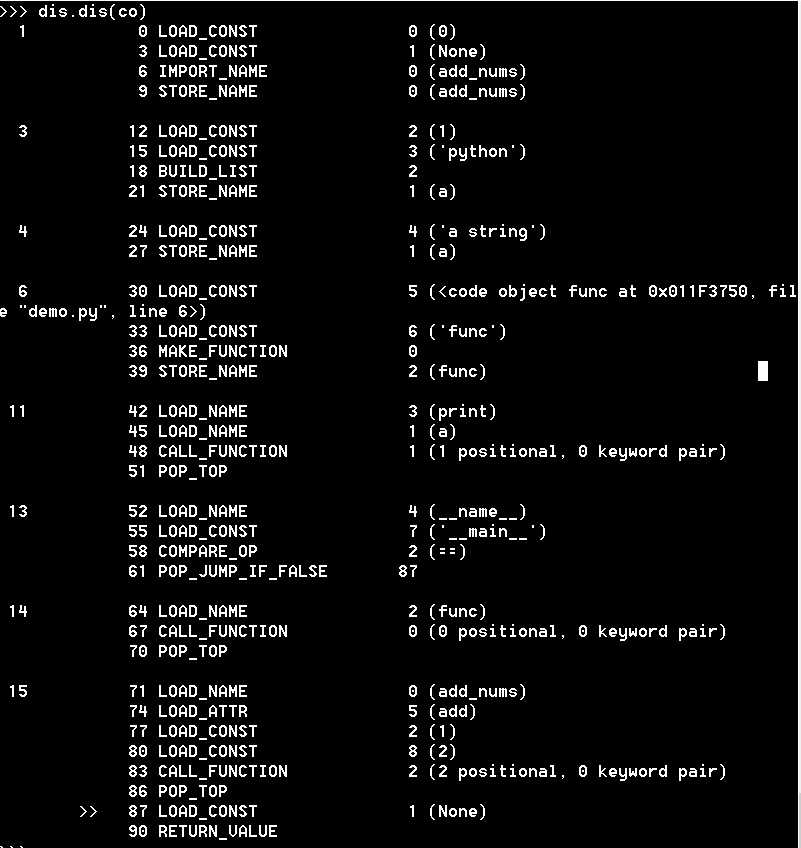Python源码分析之dis
Posted
tags:
篇首语:本文由小常识网(cha138.com)小编为大家整理,主要介绍了Python源码分析之dis相关的知识,希望对你有一定的参考价值。
一、简单例子

def add(a, b): return a + b

import foo a = [1, ‘python‘] a = ‘a string‘ def func(): a = 1 b = 257 print(a + b) print(a) if __name__ == ‘__main__‘: func() foo.add(1, 2)
运行python demo.py


在Python3 中,会自动生成一个 __pycache__ 文件夹,.pyc 文件会在这个文件夹中
二、背后的原理
1、编译
Python在运行过程会有一个main module,也就是包含if __name__ == ‘__main__‘或者是直接运行的py文件
将用户自定义的module编译成PyCodeObject对象加载到内存里,编译结束后,将其以pyc文件保存在磁盘上
这个 PyCodeObject 对象包含了 Python 源代码中的字符串,常量值,以及通过语法解析后编译生成的字节码指令。
2、如何生成pyc(Python bytecode字节码文件)文件
1、运行的时候自定义的模块会自动生成
2、python -m compileall file_path利用Python命令手动生成
3、利用py_compile包进行编译
>>> import py_compile >>> py_compile.compile(‘abc.py‘)
3、如何反编译字节码文件
pyc文件是二进制文件,打开以后直接查看是乱码,python提供了dis包
dis中常用的方法:
dis.dis([bytesource]) bytesource可以是模块,类,方法或code对象
利用dis处理文件

s = open(‘demo.py‘).read() co = compile(s, ‘demo.py‘, ‘exec‘) import dis dis.dis(co)
def myfunc(alist): return len(alist)
>>> dis.dis(myfunc) 2 0 LOAD_GLOBAL 0 (len) 3 LOAD_FAST 0 (alist) 6 CALL_FUNCTION 1 9 RETURN_VALUE
- the line number, for the first instruction of each line--------------------------对应源码文件的行号,每一行的首条指令才会显示
- the current instruction, indicated as
-->,-----------------------------------------当前指令 --> - a labelled instruction, indicated with
>>, ---------------------------------------- 标签指令 >> - the address of the instruction, ----------------------------------------------------- 指令的地址
- the operation code name, ----------------------------------------------------------- 操作代码名字
- operation parameters, and----------------------------------------------------------- 操作参数
- interpretation of the parameters in parentheses.------------------------------- 括号内参数的解释
链接32.12.3. Python Bytecode Instructions有相应操作的简单说明大家可以具体参考


具体的内容请参考:淡水网志的博客
以上是关于Python源码分析之dis的主要内容,如果未能解决你的问题,请参考以下文章
